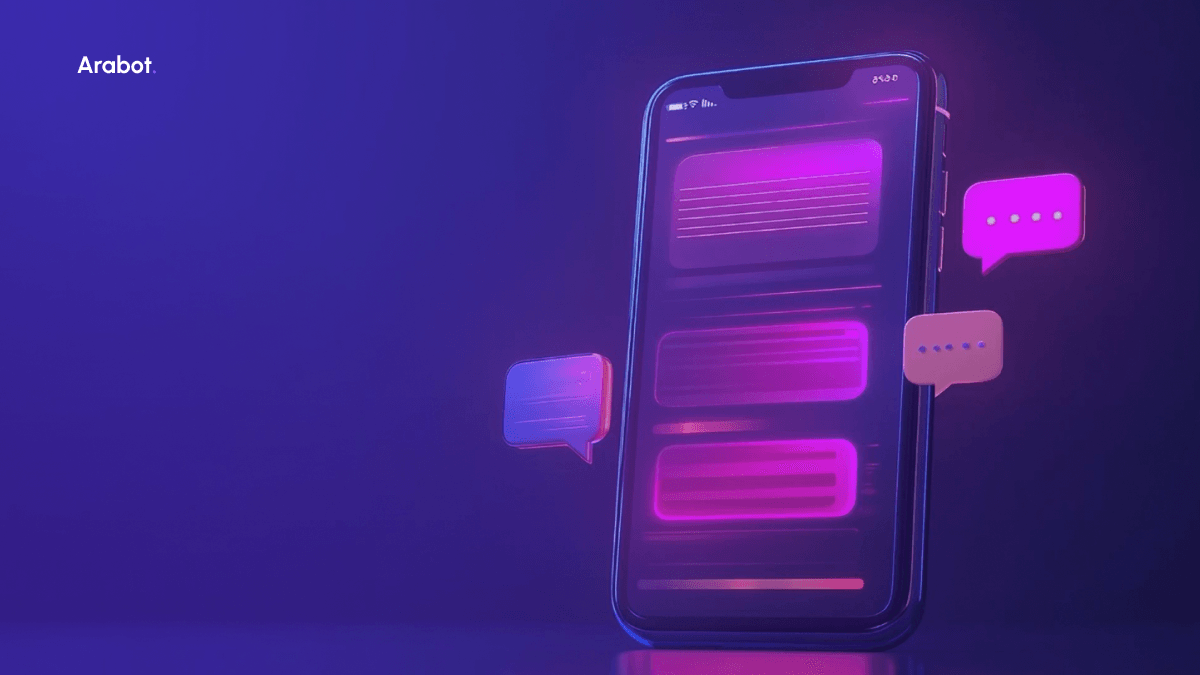- 1.
Understanding SMS Marketing
- 2.
Key features of SMS marketing include:
- 3.
Advantages of SMS marketing:
- 4.
Limitations of SMS marketing:
- 5.
Exploring WhatsApp Marketing
- 6.
Key features of WhatsApp marketing:
- 7.
Advantages of WhatsApp marketing:
- 8.
Limitations of WhatsApp marketing:
- 9.
Introducing WhatsApp Flows
- 10.
Key features of WhatsApp Flows:
- 11.
Benefits of WhatsApp Flows for businesses:
- 12.
SMS vs WhatsApp Flows: A Detailed Comparison
- 13.
Use Cases and Examples
- 14.
Choosing the Right Channel for Your Business
- 15.
When to use SMS marketing:
- 16.
When to use WhatsApp Flows:
- 17.
Combining both channels:
- 18.
Conclusion
Education
SMS vs WhatsApp Flows: Which One Should You Choose for Your Business

Mobile marketing has become an essential strategy, with SMS and WhatsApp emerging as powerful channels for customer engagement. As we move through 2024, understanding the strengths and limitations of these platforms is crucial for businesses aiming to optimize their communication strategies.
This blog post will explore the key differences between SMS marketing and WhatsApp Flow, helping you make an informed decision on which platform best suits your business needs.
Understanding SMS Marketing
SMS (Short Message Service) marketing has been a staple of mobile communication for decades. It involves sending promotional messages or important updates directly to customers' mobile phones via text message.
Key features of SMS marketing include:
- Universal reach: SMS works on virtually all mobile phones, regardless of model or internet connectivity.
- High open rates: SMS messages have an open rate of over 90%, ensuring your message is seen.
- Immediacy: Messages are typically read within minutes of receipt.
- Simplicity: SMS is straightforward and easy to use for both businesses and customers.
Advantages of SMS marketing:
- Wide reach: Almost everyone with a mobile phone can receive SMS messages.
- No internet required: SMS works on cellular networks, making it accessible even in areas with poor internet connectivity.
- Simple to use: No complex apps or training required for sending or receiving SMS.
Limitations of SMS marketing:
- Character limit: SMS is restricted to 160 characters, limiting the amount of information you can convey.
- Lack of rich media: SMS cannot include images, videos, or interactive elements.
- Cost considerations: Sending bulk SMS messages can be expensive, especially for large campaigns.
- Potential for spam perception: Customers may view frequent SMS messages as intrusive or spammy.
Exploring WhatsApp Marketing
WhatsApp has evolved from a simple messaging app to a powerful business communication tool. WhatsApp marketing leverages the platform's features to engage customers, promote products, and provide support.
Key features of WhatsApp marketing:
- Large user base: With over 2.8 billion monthly active users, WhatsApp offers a vast potential audience.
- Rich media support: Businesses can send images, videos, audio files, and documents.
- Two-way communication: WhatsApp enables real-time, interactive conversations with customers.
- End-to-end encryption: Messages are secure and private.
Advantages of WhatsApp marketing:
- High engagement: WhatsApp messages have a 99% open rate, surpassing even SMS.
- Rich media capabilities: Businesses can create more engaging content with visuals and interactive elements.
- Cost-effective: WhatsApp is generally cheaper than SMS for sending messages, especially to international numbers.
- Personalization: WhatsApp allows for more personalized and conversational interactions.
- Business-friendly features: WhatsApp Business API offers tools specifically designed for customer engagement and support.
Limitations of WhatsApp marketing:
- Internet dependency: Users need an internet connection to receive messages.
- App installation required: Customers must have the WhatsApp app installed on their devices.
- Regulatory constraints: Businesses must comply with WhatsApp's policies and obtain user consent.
Introducing WhatsApp Flows
WhatsApp Flows is a feature within the WhatsApp Business Platform that allows businesses to create interactive, guided experiences for customers without leaving the WhatsApp chat interface.
Key features of WhatsApp Flows:
- In-app interactions: Customers can complete tasks like bookings, registrations, and purchases within WhatsApp.
- Customizable journeys: Businesses can design bespoke customer journeys tailored to their specific needs.
- Integration capabilities: Flows can be integrated with existing business systems and databases.
Benefits of WhatsApp Flows for businesses:
- Improved engagement: Interactive flows keep users engaged within the familiar WhatsApp environment.
- Better personalization: Flows can be tailored based on user responses, providing a more personalized experience.
- Efficient customer support: Automated flows can handle common queries, freeing up human agents for complex issues.
- High-quality lead generation: Flows can qualify leads through interactive conversations before human intervention.
SMS vs WhatsApp Flows: A Detailed Comparison
When deciding between SMS and WhatsApp Flows for your business, consider the following factors:
Reach and accessibility:
- SMS: Nearly universal reach, works on all mobile phones
WhatsApp Flows: Large but limited to WhatsApp users with internet access
Message format and capabilities:
- SMS: Limited to 160 characters of text
- WhatsApp Flows: Rich media support, interactive elements, and longer messages
Engagement and interactivity:
- SMS: Primarily one-way communication
- WhatsApp Flows: Two-way, interactive conversations with guided user journeys
Cost considerations:
- SMS: Typically charged per message sent
- WhatsApp Flows: Often more cost-effective, especially for international communication
Security and privacy:
- SMS: Basic security, messages can be intercepted
- WhatsApp Flows: End-to-end encryption for all messages
Business features and automation potential:
- SMS: Limited automation capabilities
- WhatsApp Flows: Extensive automation options, including chatbots and integrated business tools
Use Cases and Examples
SMS Marketing Use Cases:
- Appointment reminders
- Time-sensitive promotions
- Emergency alerts
- Two-factor authentication
WhatsApp Flows Use Cases:
- Appointment scheduling and rescheduling
- Interactive product catalogs and purchasing
- Customer feedback collection
- Automated customer support
- Event registrations and ticket sales
Choosing the Right Channel for Your Business
When deciding between SMS and WhatsApp Flows, consider the following factors:
Target audience demographics:
- SMS: Suitable for reaching a broad audience, including older demographics
- WhatsApp Flows: Ideal for younger, tech-savvy users who prefer rich, interactive experiences
Nature of your business and products/services:
- SMS: Better for simple, text-based information or urgent notifications
- WhatsApp Flows: Excellent for businesses that require visual content or complex interactions
Marketing goals and objectives:
- SMS: Effective for quick, time-sensitive promotions or alerts
- WhatsApp Flows: Ideal for building long-term customer relationships and providing comprehensive support
Budget and resources:
- SMS: May be more cost-effective for small-scale, simple messaging campaigns
- WhatsApp Flows: Can offer better ROI for businesses looking to automate and scale their customer interactions
When to use SMS marketing:
- For urgent, time-sensitive messages
- When reaching customers without smartphones or internet access
- For simple, straightforward communications that don't require rich media
When to use WhatsApp Flows:
- For complex customer journeys that require multiple steps
- When visual content is crucial to your message
- For businesses looking to provide interactive, personalized experiences
- When you need to integrate messaging with other business systems
Combining both channels:
For many businesses, the most effective strategy may be to use both SMS and WhatsApp Flows in complementary ways:
- Use SMS for urgent, universal reach messages
- Leverage WhatsApp Flows for detailed, interactive customer engagement
- Direct SMS recipients to WhatsApp for richer experiences when appropriate
Conclusion
As businesses navigate the evolving landscape of mobile marketing, the choice between SMS and WhatsApp Flows comes down to understanding your specific needs and customer preferences.
SMS remains a reliable option for universal reach and simple, urgent communications. Its simplicity and high open rates make it an enduring channel for certain types of messages.
WhatsApp Flows, on the other hand, offers a more advanced, interactive approach to customer engagement. With its rich media capabilities, automation potential, and ability to create guided customer journeys, it's an powerful tool for businesses looking to provide comprehensive, personalized experiences.
The key is to align your choice with your business goals, target audience, and resources. Many businesses may find that a combination of both channels provides the most comprehensive communication strategy, allowing them to leverage the strengths of each platform.
Find out how arabot can help you set up your conversational AI agent now!
© 2025 copyright Arabot. All rights reserved.
 Insurance
Insurance Healthcare
Healthcare Automative
Automative Hospitality
Hospitality Banking
Banking Government
Government Telecommunication
Telecommunication Education
Education Human Resources
Human Resources
